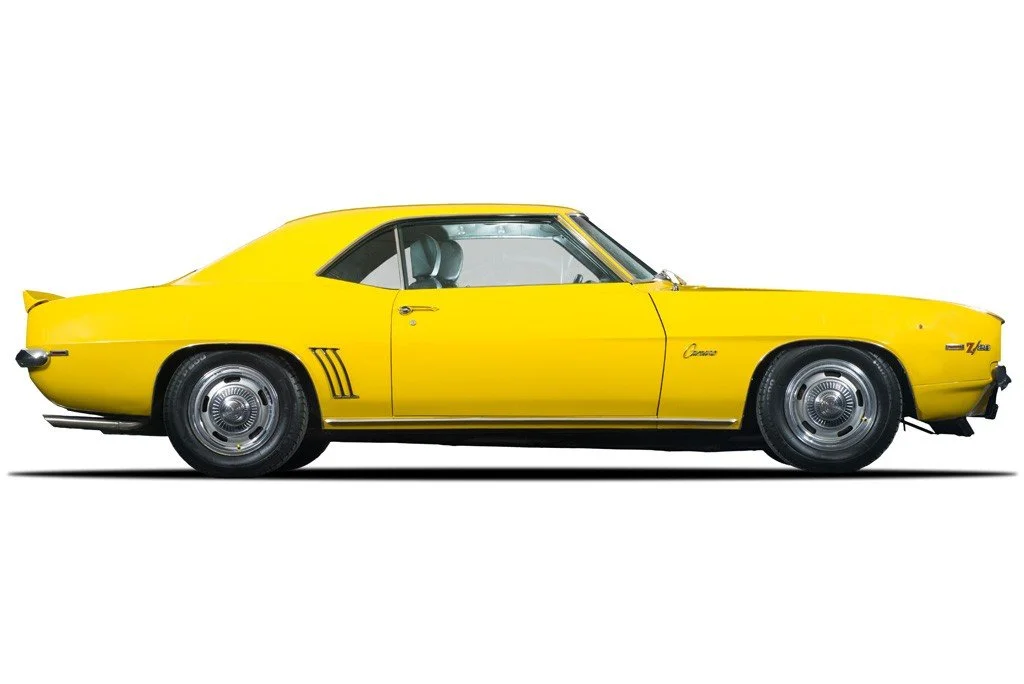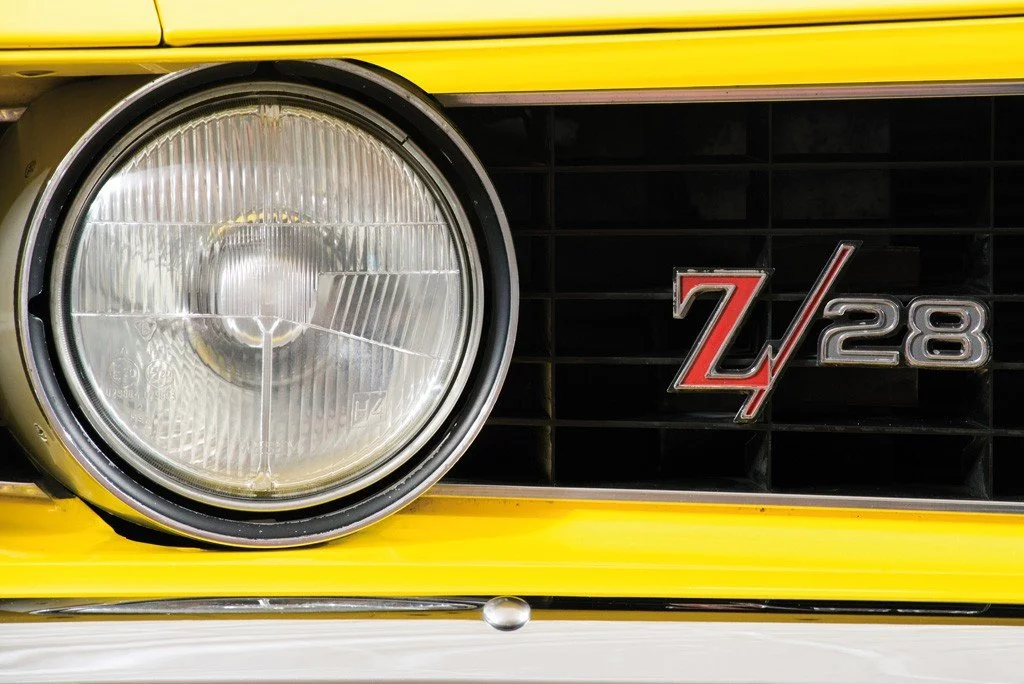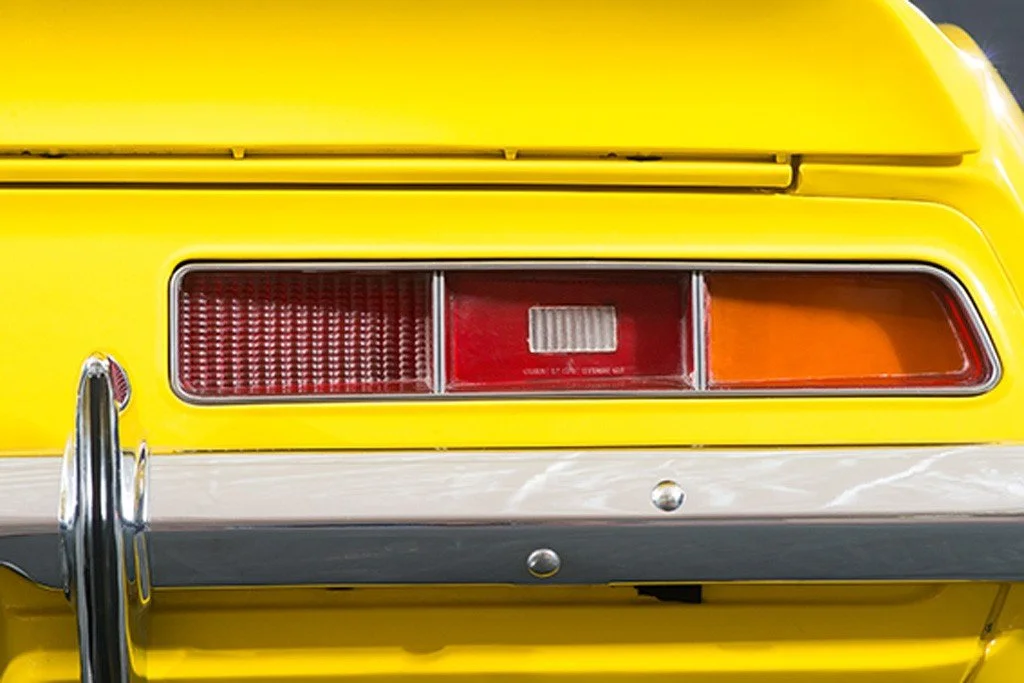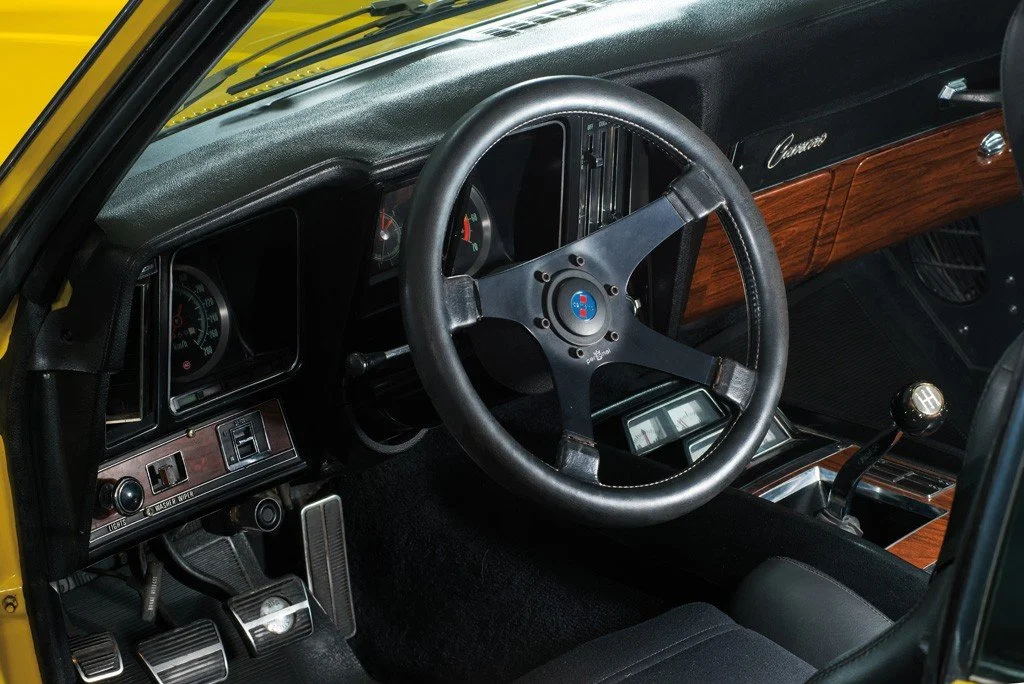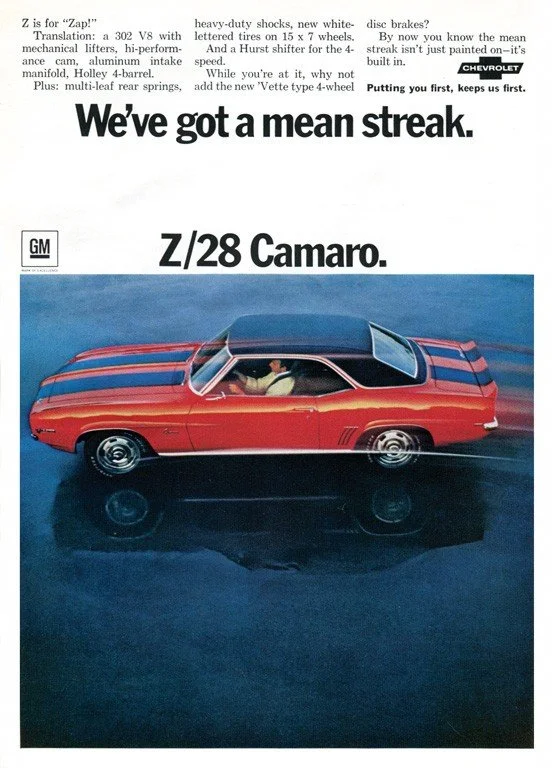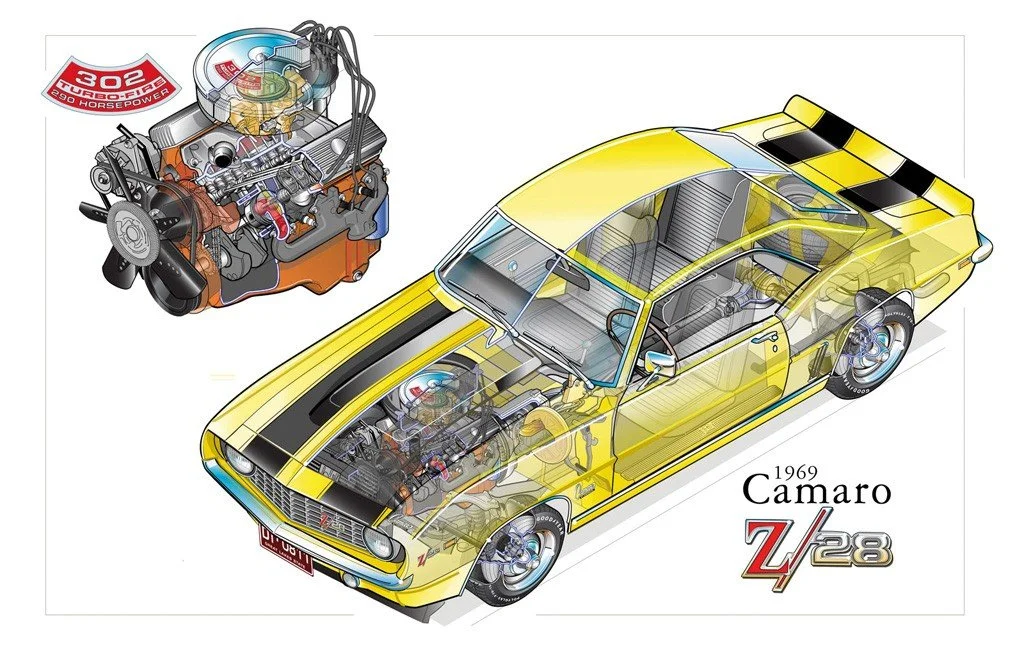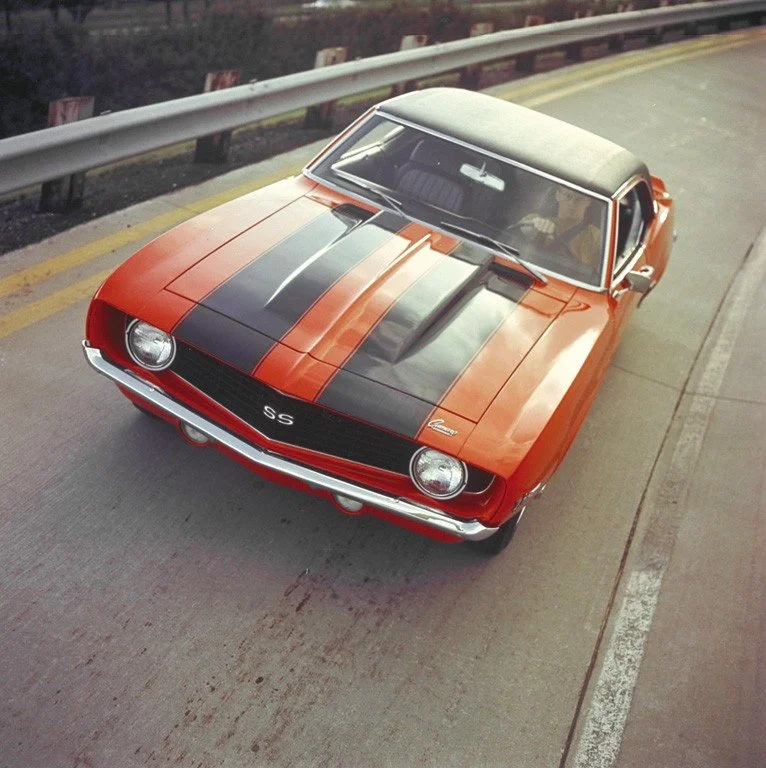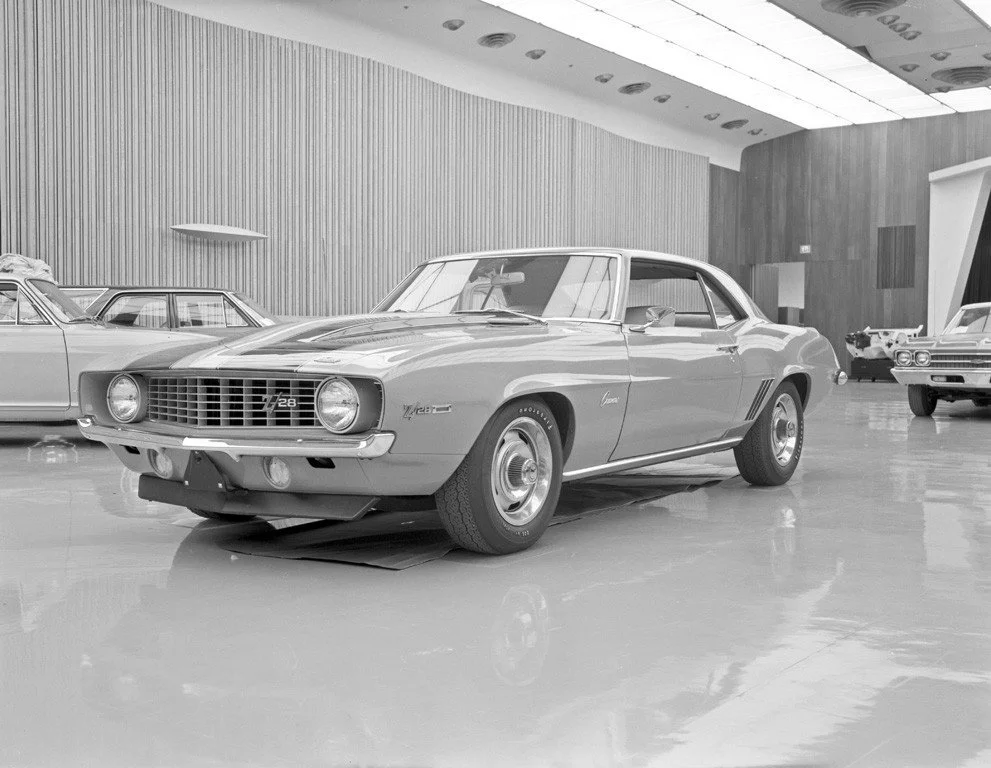-
The Chevrolet Camaro Z28 of the Bulgari Collection is a real rarity. In 1969 it was ordered new from the Auto Import dealer in Rome, and today it is the only ’69 Chevrolet Camaro Z28 in existence in Italy. At the time of order, certain factory options were requested, such as the rare disc brakes on all four wheels: this alone increased the cost of a Z28 by $500, on a retail price of $3,184, increased even more by all the import taxes for Italy. The original color of the paintwork is Daytona Yellow (paint code 76), while the interior is in Black vinyl (trim code 712).
In the nineties, to further honor the sporting history of the Z28, the original engine was replaced by a racing small-block TRA-CO assembled in Germany and developed by the team of Giovanni Ciccone, European manager for Callaway Competition. This engine, with electronic ignition, was then sent to the Bulgari Collection workshop in Rome to be installed and completed with a new aluminum radiator, special exhausts in stainless steel and other high performance parts. The transmission was also replaced with a 5-gear manual Tremec, in order to have better control over this high-powered engine that now unleashes more than 400 hp. Finally, to support the driver, racing style seats were installed.
Like all the Camaro Z28s of that period, it has no power assisted steering or air conditioning. In fact, the sensation at the wheel is one of driving a real racing car. -
Company
General MotorsWheelbase
108inInterior trim
Black vinylBrakes
front and rear discsMake
ChevroletLength
188inEngine
V8 302cidTires
F70x15Model
Camaro Z28Width
74inCarburetor
1 Carter 2-barrelOriginal Price
$3,184Body style
2-door CoupeWeight
3250lbsHorsepower
290hp @ 5800rpmProduction
19,014Model year
1969Exterior paint
Daytona YellowTransmission
4-speed manual -
Z28 is the most famous Chevrolet RPO (regular production option) code ever. No other option code has become so synonymous with high performance.
The Z28 came about as a means of making the new 1967 Chevy Camaro competitive in the SCCA Trans-Am races, a road racing series that was rapidly gaining popularity among spectators and auto manufacturers. In order to compete in the Trans-Am series, the Camaro needed to be homologated (offered as a regular consumer model). The SCCA production minimum was 1,000 units, but the Z28 managed to go racing even though only 602 cars were built in 1967. There was some fancy paperwork involving 350 cid Camaros as FIA (Federation Internationale de l’Automobile) Group I sedans, and qualifying the same cars as Group II (the Trans-Am cars) vehicles with the Z28 option.
Legendary Corvette racer/tuner Dick Guldstrand drove a Z28 to its first victory at the 1967 St. Jovite race in Quebec, Canada. There was a steep learning curve that first year, but by the end of the season the Z28s were gaining steadily. Mark Donohue won the last two races, which put the Camaro third behind Ford Mustang (first) and Mercury Cougar (second). Camaros dominated the 1968 Trans-Am, winning 10 out of 13 races and the championship. Camaro claimed the championship again in 1969, winning 8 out of 12 races. 1969 was the zenith of Trans-Am racing, with intense competition from General Motors, Ford, and Chrysler.
The smallest displacement Camaro V8 was the 327. The next available displacement was the 283, although it wasn’t offered in Camaros. A slick solution was to marry the two engines. By putting the 283’s 3-inch-stroke crankshaft in the 4-inch-bore 327, a hybrid 302.4-inch engine emerged. This was an engine ideally suited to road racing that freely revved to 7,000 rpm. The 302 was rated at 290 horsepower, but it easily hit 350 on a dynamometer. Racing (blueprinted) versions were reportedly closer to 450 ponies.
If there is one Camaro that exemplifies the whole Z28 phenomenon, it’s the 1969 model. 1969 was a banner year for Detroit and high-performance enthusiasts. Much of the media attention focused on the big-block muscle cars, but there was also lots of action with small-block-powered cars. The Camaro Z28 and its rival, the Mustang Boss 302, competed on SCCA road courses and in showrooms. The Camaros stomped the Mustangs in both venues. The Camaro Z28 won the Trans-Am championship, and outsold the Mustang Boss 302 by a landslide 20,302 units to 1,628. For 1969 all Camaros were noticeably changed outwardly, but mechanically, things remained similar to 1968. A popular styling/functional change was the raised hood scoop with the rear opening that helped draw cold air into the engine compartment. With just $458 added to the base price of $2,726 of a Camaro coupe, the Z28 included included twin rally stripes, quicker steering and the F41 handling suspension with E70x15 raised-letter tires on seven-inch wide rims. The Z/28 stripes were no longer unique to Z28s, so badges were added to the grille and taillight panel as well as the front fenders.
The 1969 engines were upgraded to 4-bolt main bearing caps. Four-wheel power disc brakes were an available option (RPO JL8), but at $500 very few Z28s received them. Another legendary service option (not an RPO, but available through Chevrolet parts departments) was the dual-quad cross ram intake manifold.
The 1969 Chevrolet Z28 Camaro remains one of Americas most desirable muscle cars of all.




